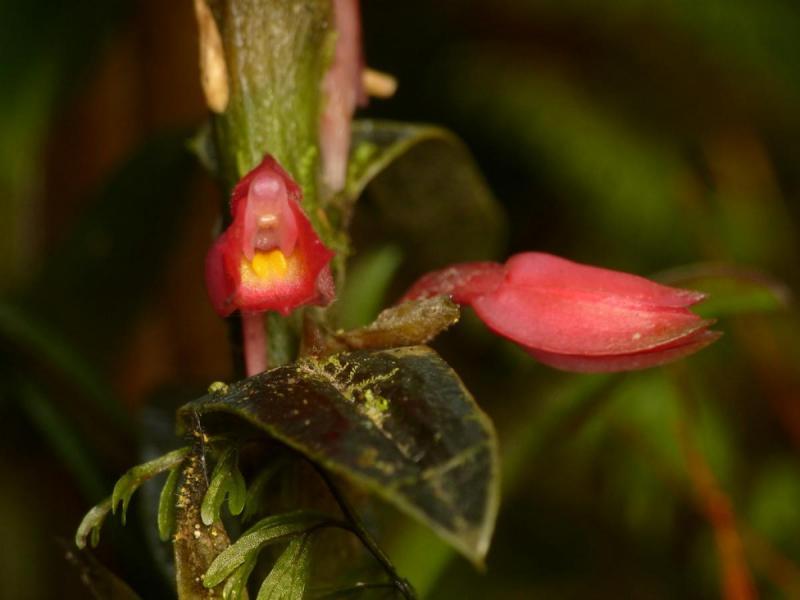Fernandezia sanguinea
Also known as: The Blood Red Fernandezia or Fernandezia sanguinea h.f. xanthina Pachyphyllum steyermarkii Centropetalum sanguineum Nasonia robusta Fernandezia robusta in the subfamily: Epidendroideae
Native to: Departamento del Huila - Colombia Ecuador Peru
General Information
The Blood Red Fernandezia is a miniature monopodial cold growing epiphytic orchid belonging to the sub family Epidendroideae native to Colombia, Ecuador and Peru.
Plant Description
Monopodial. Grows to 15cm. Each new growth has numerous thick erect leaves that grow to 0.4-1.5cm long
Care Notes
These orchids have a fine root system that can quickly die back if left dry for too long, but also does not like to be kept wet, so water regularly but ensure that the mix is dry before watering.
Climate
Grows at high elevations. Rainfall ranges from 64mm to 196mm per day, heaviest in May and lightest in December. Humidity ranges from 69% to 77%, highest in October and lowest in January. Temperature ranges from 7C to 21C, highest in March (8C to 21C) and lowest in June (7C to 19C).
Watering
These orchids prefer a wet-dry cycle between waterings, they should be watered frequently but only when the moisture is approaching dryness, where the pot feels light and/or the media looks dry. Keep an eye on mounted orchids in warm weather as they may dehydrate quickly.
Potting
These plants are quite forgiving and will do well repotted ever 2-3 years. The mix should be coarse, well draining, and allow space for air to move and for roots to grow.
Alternatively, these plants will also do well mounted to tree fern or cork slabs, or mounted to trees.
Best time for repotting or mounting the orchids is the end of winter when new growths start to appear. Avoid repotting during hot weather,












